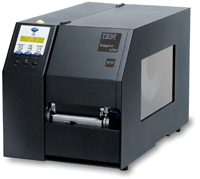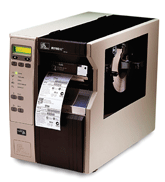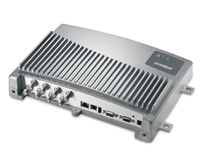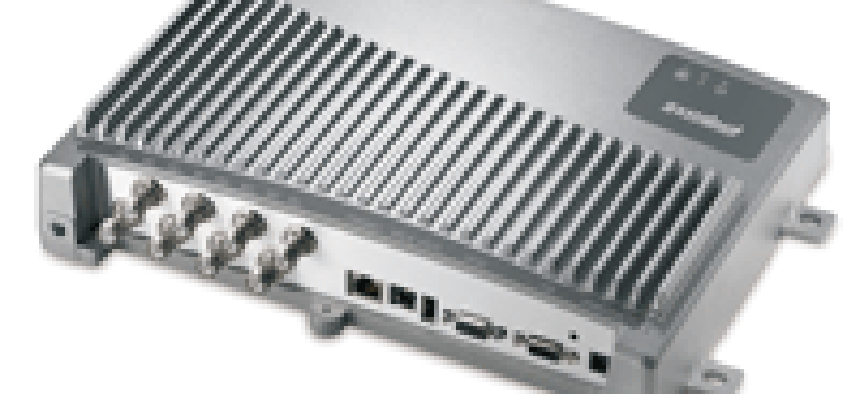Proponents of radio frequency identification technology are calling it the killer application of the decade. They believe RFID is fully equal to what the Internet was for the 1990s: a truly revolutionary change in the way business is done.Its critics, on the other hand, contend that RFID is more like an overhyped technology craze that eventually will fall under its own weight. Who's right? Only the technology gods know for sure.But one thing is for certain. RFID is resonating as a force to be reckoned with, especially now that two big public and private-sector organizations'the Defense Department and retail giant Wal-Mart'have mandated that the new Electronic Product Code Class 1 Generation 2 RFID specification be adopted by all suppliers doing business with them.At its simplest, an RFID system consists of specialized chips, tags, readers and antennas, all driven by specialized software. RFID tags are made up of small, flexible antennas surrounding tiny silicon chips that hold information about the products they are attached to. Readers are small computers/radios with one or more antennas running RFID software.When the reader sends out a radio signal, the tag identifies itself and communicates product information back to the reader for processing.All RFID systems work within definable radio frequency ranges. Low-frequency RFID products work in the 125-KHz range and are popular for such applications as access control, animal tracking, vehicle immobilizers and point-of-sale applications such as Speedpass, which lets users pay for items with a wave of the hand.At the other end of the spectrum, high-frequency RFID systems work in the 13.56-MHz band range and are used for such applications as smart cards. And systems using the 2.45-GHz and 5.8-GHz microwave band have proven ideal for supply chain management and electronic toll collection.It's a general consensus among developers and buyers that hardware operating within the ultrahigh-frequency radio spectrum of 860 MHz to 915 MHz offers an exceptionally good balance between range and performance. This is why both DOD and Wal-Mart are building their supply chains around UHF RFID.Due to recent advances in chip design, UHF tags in particular have the potential for being cheaper than those in the other frequency ranges. They also lend themselves well to both active and passive tag technology, providing a wider range of choice for designers and users alike.Passive tags obtain operating power generated from the reader. Consequently, they are much lighter than active tags, less expensive to produce and offer a nearly limitless lifetime.Active tags are powered by internal batteries and are typically read/write, meaning tag data can be rewritten or modified. An active tag may come with up to 1MB of memory, allowing for high performance with lots of stored information potential.While active tags are more powerful and flexible than passive ones, they are also more expensive (often costing up to $100 or more per tag versus pennies per passive tag) and their operational life is usually limited to about 10 years.RFID tags come in a wide variety of shapes and sizes. Animal tracking tags, inserted under the skin, can be as small as a pencil lead in diameter and about half an inch long. Tags can be screw-shaped for tree or wooden-item identification, or credit-card-shaped for access applications. The anti-theft tags on the clothing you buy at retail stores are RFID tags. Small plastic tags may be affixed to automobile windshields for passing through toll booths. Heavy-duty rectangular RFID transponders are used for tracking railroad and shipping containers, heavy machinery or trucks.[IMGCAP(2)]While reading tags placed in or near metal or liquids used to be a problem, new developments in UHF tag technology enable their use even under the paint of new automobiles rolling off the assembly line.UHF RFID systems also offer a wider potential range of applications than the others, making them a cost-effective choice for retail, industrial and government users. Typical applications include supply chain asset management, warehouse logistics, container and pallet tracking, baggage handling and scores of others including single-item tracking in the retail, medical and pharmacological industries.Given its massive leverage among suppliers, the Defense Department should get a lot of credit for the expanding role of RFID in supply chain management endeavors. Alan Estevez, assistant deputy undersecretary, said last year that by using RFID in conjunction with other technologies, DOD has reduced inventory in Iraq from about $127 million to about $70 million.With the help of RFID, the ability of the Defense Department to fill requests for critical supplies improved from 77 percent to 89 percent during 2005, while the retail backlog of requests for items coming into supply areas went from 92,000 items to 11,000, Estevez said.Spurred by Defense's success with the technology, other federal agencies are investigating RFID as well.Customs and Border Protection is encouraging U.S. companies to adopt the 'smart box' approach'using containers equipped with electronic-sensor and RFID technology that can detect tampering in transit'as part of its Customs-Trade Partnership Against Terrorism program, according to a Microsoft Business Center report on securing the shipping supply chain.Following the Defense Department's lead, the Social Security Administration has initiated a pilot program to track warehouse material using UHF RFID technology.Early tests indicated that a full RFID tracking system could save SSA between 30 and 35 percent annually in labor costs at its main warehouse in Woodlawn, Md., where millions of copies of forms and publications are stored. Eventually a system of 915 MHz UHF portals and portable readers will cover all three warehouses at SSA headquarters.The move to RFID originated in part from problems associated with manual barcoded label scanning previously used by SSA. Under the new system, workers no longer have to scan individual boxes of supplies as they move through the warehouse shipping and receiving docks. Now, a portable doorway lined with RFID readers acts as a tunnel through which workers drive their pallets of materials. As forklifts pass through the portal, the RFID readers scan the tags attached to the cartons on the pallet at a rate of about 45 tags per second. Each drive also carries a mobile handheld computer for two-way communication with the warehouse management system.Besides the undeniable impetus given to the new EPC Class 1 Gen 2 specification by support from DOD and Wal-Mart, the tangible benefits of the standard itself have helped flesh out the impact of UHF RFID products on the global marketplace.Prior to Gen 2, a number of competing standards prevailed. Gen 2 establishes a single UHF specification that improves on the best features of preceding UHF specifications, including higher-function sensor tags. It also positions UHF RFID for worldwide deployment, as it addresses emerging UHF regulations in different regions.Basically, Gen 2 improves on previous protocols by providing the following benefits:Faster, more flexible write and read speeds. Running at top speed, Gen 2 systems can theoretically run over 1,000 tags per second, but also have the option to slow down in noisy conditions and still read 100 or more tags.Higher reliability in tag counting. New 'Q' protocols and a dual-state symmetric inventory scheme delivers improved read robustness in most applications.Dense-reader operation. Gen 2 uses available RF bandwidth in a more efficient way than previous standards, isolates tag responses into a side channel where they can be better heard and works under three modes: single-reader, multireader and dense reader. The new standard also all but eliminates the 'ghost read' problems that were a common equipment complaint with earlier EPC protocols.Enhanced security. Gen 2's use of a 32-bit password provides about 4 billion different encryption possibilities. These beefy passwords can be used to activate kill commands to permanently shut down a tag as well as for accessing and relocking a tag's memory.[IMGCAP(3)]Extensibility. Gen 2 technology anticipates more advanced systems with larger memory tags, higher levels of read/write functionality and higher security.Overall, Gen 2 represents a solid move forward by the industry, and it will move UHF RFID products to an even more prominent position on the world market.That said, here are some points to keep in mind when shopping for tags, readers and printers:Tags. On a cautionary note, the market for tags is especially fluid. When searching vendor Web sites for UHF tags in the 900+/-MHz range, you'll find that many sites are unclear as to whether their tags are Gen 2 compliant or not. Meanwhile, prices are all over the map. For example, the battery-powered backscatter ALB-2480 from Alien Technology of Morgan Hill, Calif., retails for $81.20 per unit, while AD-220/221 passive tags from Avery Dennison RFID of Clinton, S.C., retail for a low of 79 cents each in quantities of one million or more.Readers. The market for multiprotocol UHF readers is burgeoning as interest in Gen 2 compliance builds. In this case, multiprotocol implies compatibility with EPC Class 1, Class 2 and Gen 2 specifications. Depending on what is bundled into the device, expect to pay between $2,000 and $3,000 for most Gen 2 readers.A few readers, like the $2,600 V70-BA50C from Omron RFID of Schaumberg, Ill., offer performance in several frequencies, including the 915-MHz UHF bandwidth and the high-frequency 13.56-MHz range.Handheld readers like the MC9000-G RFID from Symbol Technologies Inc. of Holtsville, N.Y., can provide portability for factory or warehouse users.Printers. RFID printers like the Intellitag PM4I from Intermac Corp. of Everett, Wash., are multiprotocol, multifunctional printers capable of printing both the coded information and background colors/information on smart labels.While many of them are designed from the outset as Gen 2 devices, some of them are Class 1 or units upgraded to Gen 2 with downloadable firmware. The $1,497 I-Class RFID Ready Printer from Datamax Corp. of Orlando, Fla., is a field-installable module with Gen 2 capabilities that can be mounted in several of the company's standard I-Class units.UHF multiprotocol smart-label printer/encoders from Zebra Technology of Vernon Hills, Ill., are software-defined radios that support multiple protocols.Other products. Special notice should be given to IntelliRouter and IntelliSwitch products from Vue Technology Inc. of Lake Forest, Calif., which work together as routers and switches to leverage the ability of single RFID readers to service thousands of antennas, thus greatly reducing the bottom-line costs for an extensive enterprise system.
The IBM Infoprint 6700 RFID printer prints labels up to 4 inches wide and can support barcodes.
The R110Xi RFID printer from Zebra Technologies can print at a resolution of 300 dpi and sells for $4,190.
Symbol Technologies' XR400 RFID reader provides enterprise connectivity via 10/100BaseT Ethernet.






